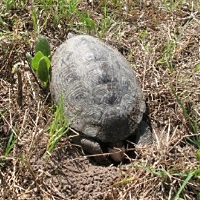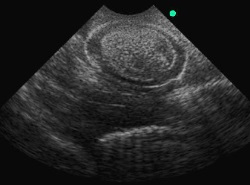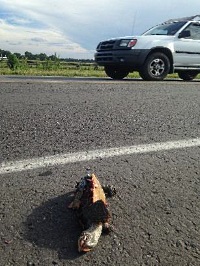Research - Nesting Distribution and Vehicle Mortality

Despite the obvious importance that annual nesting has for maintaining diamondback terrapin populations, standardized data collection is not available for South Carolina due to the extreme difficulty in identifying nest locations. In contrast to sea turtles that are heavy and typically cross wide sandy areas before laying eggs, terrapins are small, have walking legs instead of flippers, and nest in habitats where tracks are less likely to reveal where nests were laid. Because diamondback terrapins are adapted to traveling on land, they are also less likely to rush the nesting process when a threat is detected. Consequently, identification of nest locations for terrapins in South Carolina requires as much luck as it does skill; thus, this type of data collection cannot be completed statewide without citizen scientist reporting.

Hormone analysis18 suggests that the nesting season for diamondback terrapins in South Carolina runs from early May through early July; this season length is similar but begins roughly a month earlier than the nesting season for diamondback terrapins in New Jersey31. In South Carolina, diamondback terrapins also appear to lay fewer eggs (about 7 vs. 12) than diamondback terrapins in New York and New Jersey, but eggs laid in South Carolina also tend to be larger than in the northeast.31, 34, 43, 44 It is also not uncommon for diamondback terrapins in the northeast to lay more than one clutch of eggs each season34, whereas multiple clutches in a season is more commonly the exception than the rule for diamondback terrapins in South Carolina.

When diamondback terrapins crawl out of the marsh in search of a suitable place to nest, they are vulnerable to being run-over by vehicles traveling on scenic roadways that bisect prime terrapin nesting habitat. In Georgia, terrapin mortality on barrier island causeways has led to creative solutions to reduce terrapin mortality such as specialized paths for diamondback terrapins and signs with flashing lights to alert motorists where terrapins may cross the road45. In contrast to drowning in crab traps, road mortality is not associated with diamondback terrapin abundance in adjacent waterways24; however, statistical models reveal that when multiple survival threats are present, accelerated rates of negative population impacts occur.46 As such, and because diamondback terrapins may converge on common nesting areas, it is important to identify locations where female diamondback terrapins are most susceptible to road mortality.
